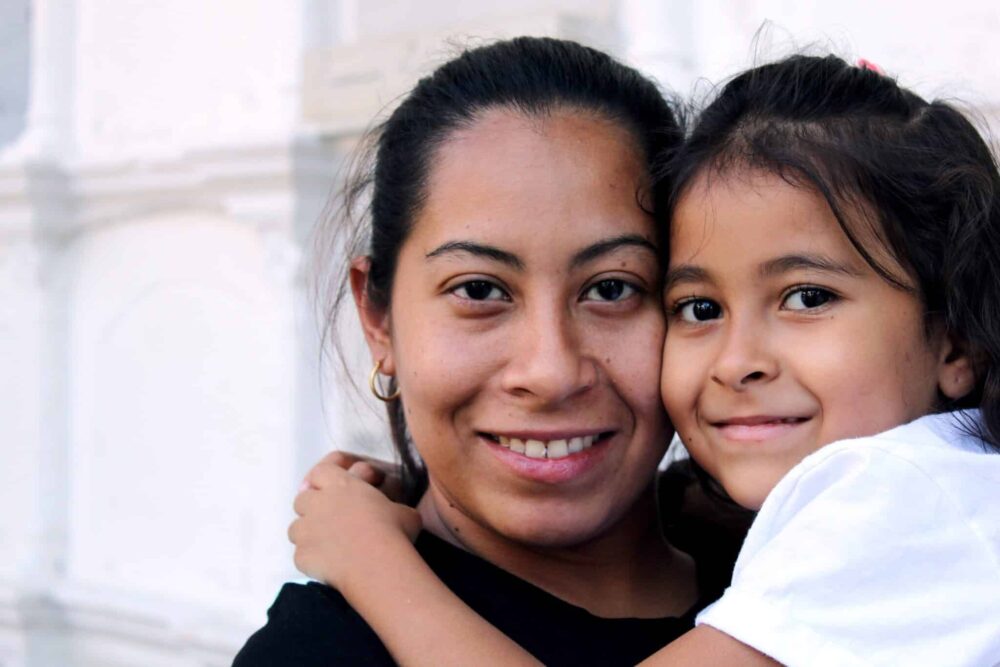Note: this and other blogs can be found on our sister site Wonder Ink.
When we look at bringing the Bible to life for our children, let’s start with the why. Why do we do it?
We do it because it offers children more than a story. It offers them a place in God’s Big Story. A place where they are known by God, loved by Jesus, and led by the Holy Spirit. It’s a place where they are invited to be participants instead of spectators.
We do it because it gives them a seat at His table no matter their age. It’s where they learn that the people of the Bible are real people just like them—people with real lives full of love, dreams, victories, disappointments, and even fears.
It helps them know that God is able—and He can move in their lives. It makes space for children to be known fully as they accept the loving grace of our wonderful Savior.
When we bring the Bible to life for our kids, we can embrace the hard questions, allowing curious kids to see just how big our God is and reminding us sometimes-forgetful-adults of the same.
That’s why we do it. Now, let’s move onto some of the how.
Now, we all know that we need to teach in ways that reach multiple learning styles, as each child will learn in a different way! But what else do we need?
Guideposts for Sharing Scripture
One place to start in the how is by establishing guideposts for how we present the truth of Scripture for kids.
Share individual stories from the Bible in the context of God’s Big Story.
The first thing it’s so important to do is to always point stories from the Bible back to the big story of what God was and is doing. We want kids to see the fullness of what God was doing in those stories, so they can more clearly see how He is working in their lives today.
It’s important for them to know that God moved on behalf of the people in Scripture, and He is also moving on their behalf. When they can connect the faithfulness of God throughout each story, they can see that He is trustworthy and His Word is true. They can begin to see His very personal pursuit of each one of them.
It’s essential that every piece of Scripture is tied to the whole of God’s Word. He is the God of our yesterday, today, and tomorrow.
This can change how children read and interpret Scripture on their own and how they view God in light of their community and personhood.
Share that the hope of the gospel is in every story.
God had a plan all along—and sin doesn’t get to keep the headline. The price Jesus paid for each of us was always part of the plan, and He deserves all the glory in that! God extends to us a redemptive invitation of salvation through grace in Jesus.
Kids need to understand and see the fullness of what sin leads to—death. But it’s even more important for them to understand that Jesus conquered death so that they can live in freedom. That they can have life through faith in Jesus and following God’s Word.
Make sure kids understand that Jesus made the way so that they can choose Him every day.
When we reference the people in these stories, show them as real people—not characters or heroes.
The children in our care need to know that the people we speak about in the Bible are people just like them! People who make mistakes. People who have big dreams. People who believe with their whole hearts. People like you and me.
And if God can use those people, if God can use us, He can use our kids!

Share biblical language.
It’s important that we help kids understand the meaning of Scripture and biblical language within context. It opens a whole new world of how they read the Bible.
It helps us stay aligned because we add nothing to God’s Word and we take nothing away—allowing children to understand the fullness of what Scripture has to offer.
Help children identify who they are in Christ.
Our identity is rooted in the same way our faith is: in being confident of what we hope for in Jesus. We become who we were created to be through claiming our inheritance as image-bearing children of God.
The more we look like Jesus, the more we look like the people He made us to be. When we take pressure off kids to be something, do something, and become something, they can walk in their kingdom identity.
When they understand that the God who created them knows them fully, loves them relentlessly through the personhood of Jesus, and will lead them in everything by the Holy Spirit, they can own their inheritance as His children.
The pressure to be, do, and become is off. They can rest in their Savior, walking close with Him—trusting and knowing that He will lead the way.
Imagine the church rallying together, building a strong foundation, so that no matter where our children go in the church, they are seeing the same truths being modeled before them.
Choose a curriculum that does all of these things.
So that you aren’t on your own as you lead, it’s so important that you choose a curriculum that supports these ideas. Publishers like David C Cook create curriculum so you aren’t alone in your ministry doing this significant work.
It’s important that we train our volunteers and parents around these ideas as well.
Imagine the church rallying together, building a strong foundation, so that no matter where our children go in the church, they are seeing the same truths being modeled before them.

The Bible Comes Alive When It’s Personal
Another place to start bringing the Bible to life is by consistently reaffirming what God says about our children.
Kids can know what is always true.
- I am known by God.
- I am loved by Jesus.
- I am led by the Holy Spirit.
- I am a child of God. And my life can tell of God’s wonder.
I am known.
God, the Creator of all, knows our kids. He has always known them. He has had them in mind from the very beginning. He made each one of them in His own image, and each is His masterpiece.
Our children are known by the Creator and that means they belong. Each one of them gets to be part of His family.
When kids understand that God knows them—all of them—it reassures them that they have nothing to hide. There’s nothing to run from when you are known. It’s a simple statement that brings God near to our hearts. He knows us.
Psalm 139:13-14 NASB says:
“For You created my innermost parts;
You wove me in my mother’s womb.
I will give thanks to You, because
I am awesomely and wonderfully made;
Wonderful are Your works,
And my soul knows it very well.”
I am loved.
Jesus’ perfect life, death, resurrection, and promised return are God’s love story. Jesus came to fulfill God’s promises to His children.
Through Jesus, we each can have salvation—yes, including our kids. His love for our children has no beginning and no end, and they get to love Him back. Jesus is God’s love in person. Jesus is the way to God’s love.
Our children are loved by Jesus, and they get to share His love too.
When kids comprehend that they are fully known and fully loved, they see just how much God really loves them. That even though He knows the messy parts of them—He loves them the same. His love and His grace are really beautiful.
It gives our children the opportunity to choose God’s love and God’s way.
John 13:34, 35 NASB says:
“I am giving you a new commandment, that you love one another; just as I have loved you, that you also love one another. By this all people will know that you are My disciples: if you have love for one another.”

I am led.
God gives His followers the gift of His Holy Spirit when each chooses to live for Jesus. The Holy Spirit invites us to live in God’s Kingdom—now and not yet. When our kids let the Holy Spirit lead, He strengthens them, and they grow in belief.
When they accept Jesus as Savior, they receive the Holy Spirit as a gift.
As our children learn that God’s way is the best way, their faith grows too. The Holy Spirit helps each one of us be more like Jesus—the people we were made to be.
Because our kids are led by the Holy Spirit, they can follow Him.
Romans 8:14, 15a NASB says:
“For all who are being led by the Spirit of God, these are sons and daughters of God. For you have not received a spirit of slavery leading to fear again, but you have received a spirit of adoption as sons and daughters.”
As I said before, this takes the pressure off of them—the pressure to be, do, and become. They can rest in their Savior, walking close with Him—trusting and knowing that He will lead the way. This truly brings the Bible to life in a way that is almost unexplainable.
I am a child of God.
God’s amazing story changes our stories.
Because God knows each of us, Jesus loves us, and the Holy Spirit leads us, we each get to be a wonder-filled reflection of God to the world. Our children get to know who they truly are and who they were made to be. God delights in them!
The Bible tells our children that they are fearfully and wonderfully made, knit together by a loving God who knows all about them and loves every bit of them.
Our children are wonders. They get to be part of God’s story, and their lives tell of God’s wonder.
1 Peter 2:9 (NASB) says:
“But you are a chosen people, a royal priesthood, a holy nation, a people for God’s own possession, so that you may proclaim the excellencies of Him who has called you out of darkness into His marvelous light.”
Making Space for Response
When children know that God fully sees them, knows them, hears them, and loves them, they realize they can trust Him with everything. It’s so important that we make space within our ministries for children to respond to God—whether through song, writing, drawing, creating, painting, praying, or something else!
With God moving, and our children free to express their response, they can know that His Word is alive and active. That His commands are true. That He is near to them and is with them—no matter what the cultural context says and no matter what it looks like in the future. His Word remains steadfast and true.
Make space in your ministry for children to respond to the God who knows them, loves them, leads them. Make space for them to understand their identity as His kids.
Questions for Reflection
- Am I intentional about making space for Jesus to be King of my ministry?
- What are some things I can do differently so I can do this even better?
- Am I giving children the language they need?
- How am I making space for the living Word of God to move?
- Do my plans and responses allow God to work in the ways He intends, or do my intentions and opinions get in the way?
- How am I making space for curiosity and questions within my ministry?
- Do the kids, parents, and volunteers in my ministry feel safe to ask the hard things?
Download What If We’re Failing Kids at Faith Formation? And How Not To
This faith formation guide shares our desire to invite kids, parents, and volunteers into a Gospel-centered journey of curiosity, belief, faith, and identity.




